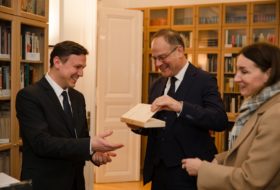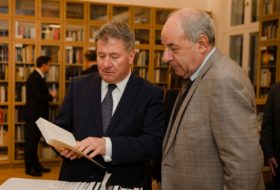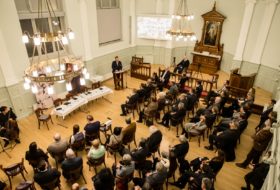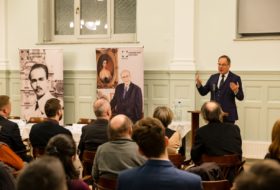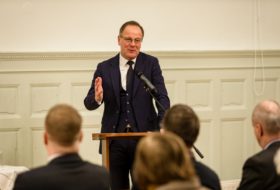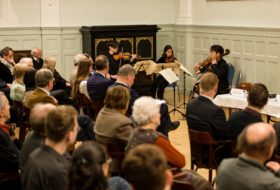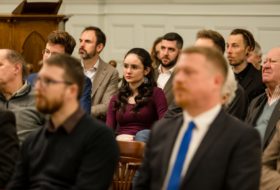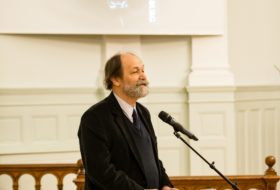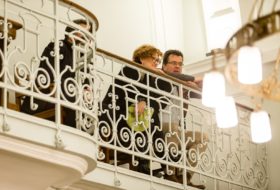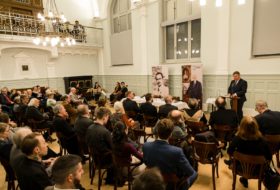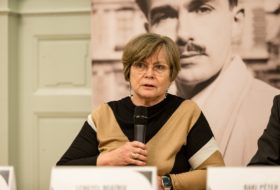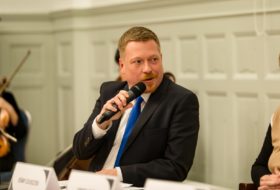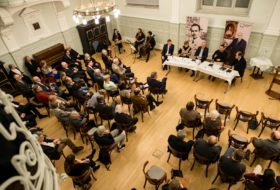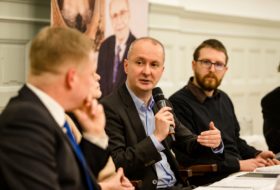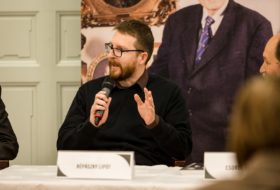On 22 January 2024, at the Evangelical Lutheran Church in Hungary’s Chapel at Szentkirályi Street, Gergely Prőhle gave his welcoming address to a packed audience. The Director of the Foundation briefly praised the late pianist and diplomat Árpád Fasang’s initiative, which this year marks the 35th commemoration of the “Birthday of the Hymn”. Then, speaking about our latest publication, “99 Years–99 Pictures — Photographs from the Life of Otto von Habsburg”, he thanked the editor, Szilveszter Dékány and all our colleagues involved, as well as the work of Helikon Publishing House. Turning to the contents of the volume, he commented on the political consciousness of our namesake, evident from the photographs, with which the successor of the dethroned Monarchy shaped himself into a committed democratic advocate of European unification. This process was documented by such illustrious photographers of Hungarian origin as Juan Gyenes, Nicolas Müller and Paul Almásy, whose works contributed to the international recognition of Hungarian culture and art. Gergely Prőhle stressed that our Foundation continues to perform its tasks to the highest professional standards and—after expressing his appreciation for the interest shown by the many public collectors who attended—he outlined the achievements of the past year in the processing of the heritage of Otto von Habsburg.
According to Tibor Navracsics, Minister of Public Administration and Regional Development, Otto von Habsburg is an example of how ideals can be represented in politics without formal positions of power, solely through the authority of personality, with immutable moral and mental capital, and with a captivating intellectual charisma. Not only the throne but preparation and commitment are the very attributes of royalty. It is instructive, he reminded us, how Otto sublimated the experience of governing the Monarchy—a truly tangible expertise —into the ideal of a united Europe.
The compilation of a photo album is a great responsibility, emphasised László Csorba, Professor Emeritus at ELTE, when presenting the book. One tends to be more critical of material that one has only read, and nowadays, the thought-forming power of images is particularly immeasurable. The 99 moments in Otto’s life, selected with unerring photographic flair, are a vivid reflection of the personality of the former heir to the throne—he commended.
After the laudation, a round table discussion took place with the participation of representatives of the field, where Beatrix Lengyel (Head of the Historical Photographic Department of the Hungarian National Museum), Lipót Répászky (Chief Executive Officer of the National Audiovisual Archive), Péter Baki (Director of the Hungarian Museum of Photography and the Mai Manó House – Hungarian House of Photographers) answered questions from our colleague Szilveszter Dékány, Senior Research Fellow: what are the methodological distinctions in the management of a photo collection compared to other types of records? How can documentary photography become an artistic image? What is the difference between capturing a historical moment and experiential photography? What is their opinion on using artificial intelligence in the processing of photo collections? What is the current state of training and education of photo archivists? How will photo archiving be carried out in their institutions in 30 years?
To conclude the evening, Gergely Prőhle quoted Professor Tamás Freund’s congratulatory letter: ‘It appears that even a few details can come together to form a whole, and the 99 photos reveal the image of a public man whose heart and spirit are pure, who nevertheless became a dominant figure through his creative power, who supports politics above nationalities, who loves his family and his home,’ wrote the President of the Hungarian Academy of Sciences. Following the book launch, the Foundation hosted a standing reception for our guests.

